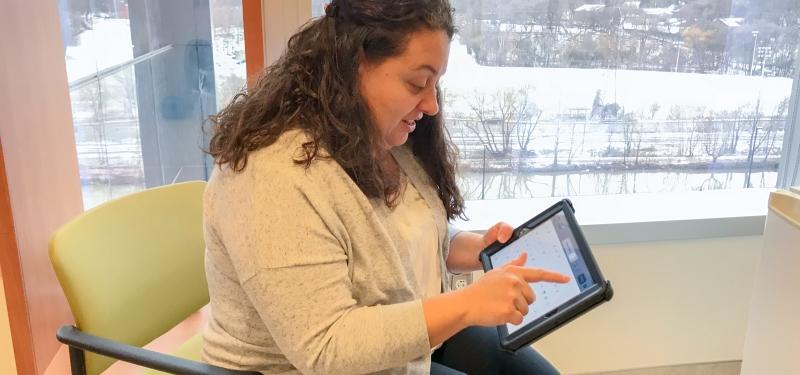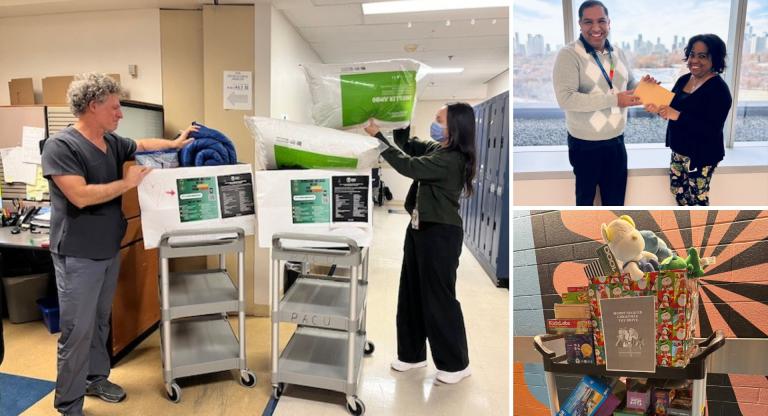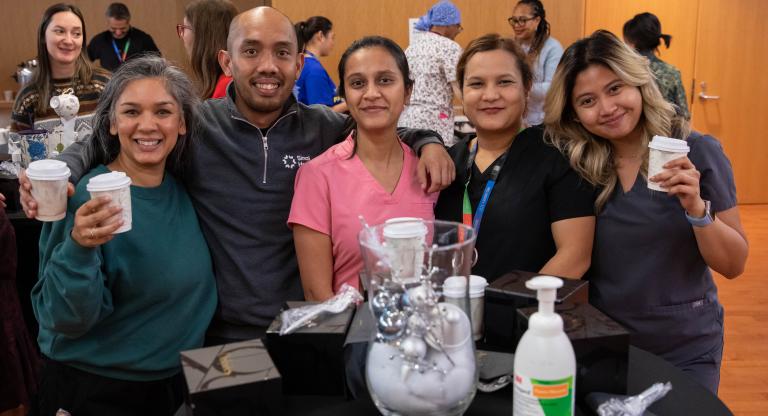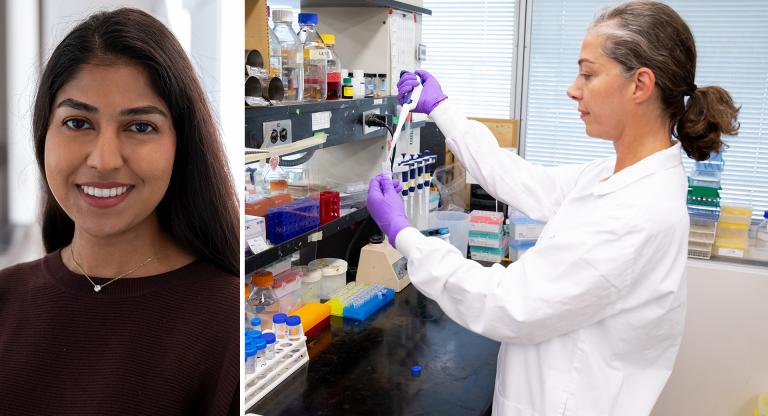Incorporating mobile apps into rehabilitation

In a Bridgepoint first, patients now have access to mobile tablet technology as part of their Speech-Language Pathology (SLP) and Occupational Therapy (OT) treatment.
iPads equipped with specialized applications have been deployed to support care on the inpatient Stroke and Acquired Brain Injury Neurological Rehabilitation Units.
Krista Caulfield, Clinical Practice Leader for SLP and Sandy Duncan, Clinical Practice Leader for OT, led the project, along with Melissa Turner-Joseph, Speech Language Pathologist. The group worked closely with the Information Services team to test and evaluate available apps and set up the tablets.
“The apps we’re using are designed to help patients work on thinking skills including focus and memory. Some applications may also be helpful for both the patient and the care provider to track the patient’s progress throughout their rehabilitation,” says Sandy.
Valerie Smith is one patient who has used a tablet as part of her rehabilitation after a stroke. Valerie’s stroke injured an area of her brain responsible for processing or making sense of information received by the left side of her left eye. This has resulted in a loss of peripheral vision on her left side. An app on the tablet—a little bit like a video game—is helping Valerie to retrain the way she visually scans the environment to compensate for this change in the way her brain processes information.
Valerie says she loves using the tablet. “I’m extremely motivated to get better, so when something like this tablet comes along, I think it’s so great. With this app I feel like I’m making progress and the more I used it, the more I wanted to keep going.
The iPads are also being used as educational tools. “Using the tablet I can show a patient who has difficulty swallowing an animation or video so they can see the mechanisms involved in swallowing and better understand our treatment approach,” says Krista. “When patients can see and understand better what’s going on, it helps with motivation.”
Sandy and Krista say that since they launched the new technology last month they’ve received positive feedback about the project from patients and care providers. They hope to be able to expand the program to other units in the future.











